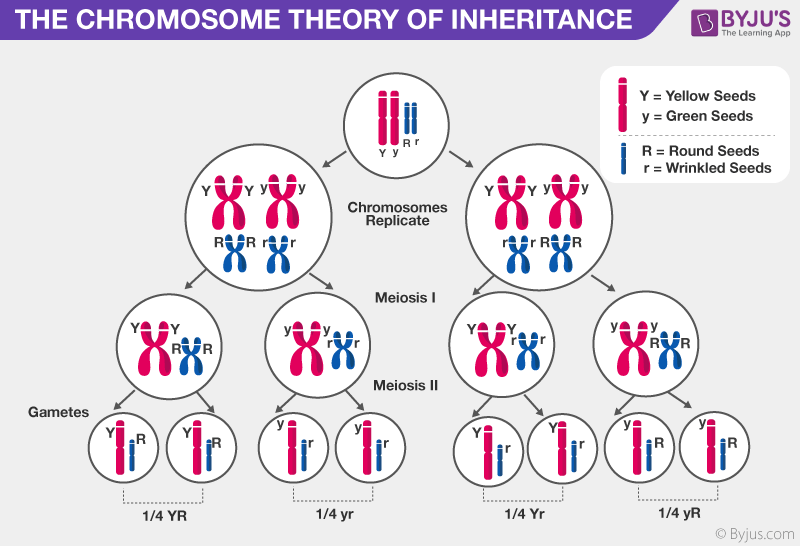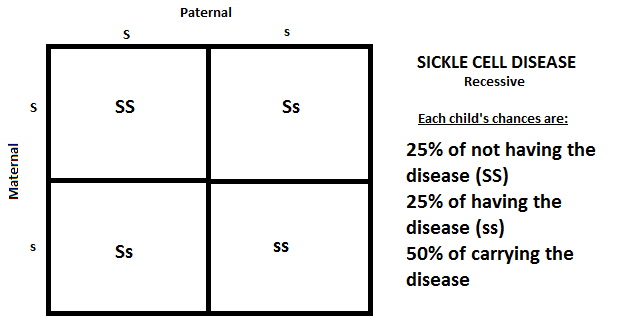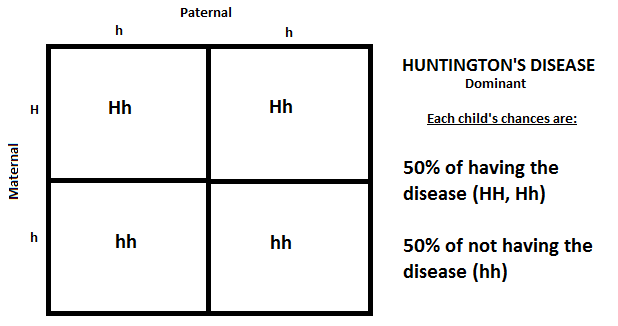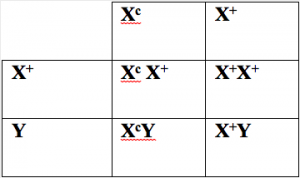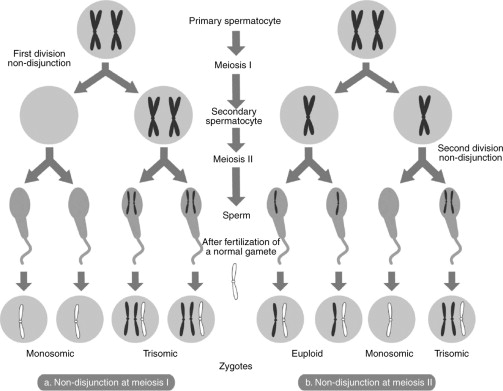Chromosomal Inheritance Study Guide
Introduction
Chromosomes are a thread-like structure made up of nucleic acids and proteins found within the nucleus of live cells. They are primarily responsible for conveying genetic information in the form of genes.
Mendelian inheritance refers to the kind of inheritance that follows the laws of segregation and independent assortment. It follows this pattern where a gene inherited from either parent segregates into gametes at an equal frequency.
The chromosomal theory of inheritance
Boveri and Sutton proposed the chromosomal theory of inheritance in the early 1900s. According to this hypothesis, genes are the units of inheritance located in the chromosomes.
Observations of Chromosomal theory of Inheritance
The Chromosomal Theory of Inheritance supports Mendel’s rules. The following are the findings of this theory:
- During meiosis, homologous chromosome pairs migrate as discrete structures that are independent of other chromosome pairs.
- The sorting of chromosomes from each homologous pair into pre-gametes appears to be random.
- Each parent synthesizes gametes that contain only half of their chromosomal complement.
- Even though male and female gametes (sperm and egg) differ in size and morphology, they have the same number of chromosomes, suggesting equal genetic contributions from each parent.
- The gametic chromosomes combine during fertilization to produce offspring with the same chromosome number as their parents.
Phenotypic variance is affected by genetic disease and genetic variation:
Diversity in the arrangement of bases in nucleotides in genes causes genetic variation. If differences in the order of nucleotides in the DNA sequence result in differences in the order of amino acids in proteins coded by that DNA sequence, and if the resulting differences in amino-acid sequence influence the shape, and thus the function, of the enzyme, then genetic variation will result in phenotypic variation.
A deviation in part or entirely from the usual DNA sequence can cause a medical condition called a genetic disorder.
These are the types of genetic disorders:
1. Single-gene disorders, where a mutation affects one gene:
A. Sickle cell anemia is an example and affects hemoglobin. The body produces abnormally shaped red blood cells that have a crescent or sickle shape which leads to anemia. The sickle cells also get stuck in blood vessels, blocking blood flow.
Sickle cell anemia is inherited in an autosomal recessive pattern, which means that both copies of the gene (from the mother and father) in each cell have mutations (disease-causing alleles). A person who carries one copy of the mutated gene is said to be a carrier for the condition. In an autosomal disorder both males and females can be carriers. Here both the mother and father are heterozygous for the disease.
B. Huntington disease (HD) is a condition that causes progressive degeneration of neurons in the brain and is inherited in an autosomal dominant pattern. A mutation in even one (dominant allele) of the two copies leads to disease symptoms. The mother here is heterozygous (affected) for the disease and the father is homozygous recessive (normal).
C. X-linked inheritance means that the gene causing the trait or the disorder is located on the X chromosome. Females XX chromosomes. Males have XY chromosome. For males, there needs to be only one copy of a nonworking gene (on their 1 copy of the X chromosome) for the trait or disorder to appear. The gene responsible for color blindness is located on the X chromosome. In this condition a person cannot see shades of red and green but can otherwise see normally.
Let (Xc) is the recessive allele that causes colorblindness and (X+) is the normal dominant allele. Females that are X+X+ or X+Xc have normal color vision, while XcXc females are colorblind. Males that are X+Y have normal color vision, while XcY males are colorblind.
2. Chromosomal disorders, where chromosomes (or parts of chromosomes) are missing or changed.
A. Meiosis occurs during gamete production,with the creation of four daughter cells, with a haploid complement of chromosomes in each gamete. Nondisjunction occurs when a pair of homologous chromosomes has failed to separate or segregate at anaphase so that both chromosomes of the pair pass to the same daughter cell. This results in aneuploidy: when the total number of chromosomes in a cell is not an exact multiple of the haploid number.
Nondisjunction can take place in either meiosis I or meiosis II. If nondisjunction occurs in meiosis I, all four products of meiosis will be chromosomally abnormal. If nondisjunction occurs in meiosis II, two of the four products will be unaffected by the event and two of the products will be abnormal
B. Trisomy is the most common aneuploidy. Down syndrome is also referred to as Trisomy 21 and is a chromosomal disorder. Down syndrome is a condition in which a person has an extra copy of chromosome 21. This syndrome leads to lifelong intellectual disability and developmental delays and causes learning disabilities in children. Medical abnormalities including heart and gastrointestinal disorders are also observed.
Conclusion:
- Homologous chromosomal pairs are separate from other chromosome pairs, and chromosomes from each homologous pair are sorted into gametes at random.
- Gametic chromosomes unite during fertilization with the same chromosomal number as their parents; eggs and sperm have the same chromosomes.
- Morgan’s research with fruit flies established the chromosomal theory of Inheritance since eye color in fruit flies was the first X-linked feature observed.
FAQs:
1. How does meiosis lead to genetic diversity?
Meiosis, in particular, develops novel genetic material combinations in each of the four daughter cells. The exchange of DNA between paired chromosomes creates these novel combinations. As a result of this exchange, the gametes generated during meiosis have a wide range of genetic diversity.
2. Why is meiosis important in maintaining genetic diversity?
Meiosis is crucial for three reasons: it permits diploid creatures to reproduce sexually, allows for genetic variation, and assists in the repair of genetic abnormalities.
3. Does meiosis produce genetically diverse cells?
Unlike mitosis, meiosis produces a genetically heterogeneous set of daughter cells. Homologous chromosomes swap DNA bits to form genetically distinct hybrid chromosomes for each daughter cell.
4. Does mitosis or meiosis generate genetic diversity?
Meiosis creates genetic variety by allowing novel combinations of variants to develop in the gene pool through a process known as crossing over. Homozygous chromosomes come together during the prophase of meiosis I and exchange genetic material.
5. What are 3 reasons to explain genetic variations in meiosis?
The following are the three major sources of genetic diversity resulting from sexual reproduction: Crossing the border (in prophase I) Chromosomes are arranged in a random order (in metaphase I) Fusion of gametes from various parents at random.
6. Which of the following generates genetic diversity?
Mutation (which can produce whole new alleles in a population), random mating, random fertilization, and recombination between homologous chromosomes during meiosis (which reshuffles alleles within an organism’s progeny) all contribute to genetic variation.
7. How does meiosis contribute to genetic variation while mitosis does not?
Examine how meiosis, but not mitosis, contributes to genetic variation. The independent arrangement of the pairs of chromosomes and crossing over during meiosis offer a significant degree of genetic variation. Mitosis results in the formation of identical cells.
8. Why does meiosis result in greater genetic diversity than mitosis?
Mitosis divides a cell into two identical daughter cells with the same number of chromosomes as the parent cell. In each of the four daughter cells, meiosis produces different combinations of genetic material. As a result, meiosis produces more genetic variety than mitosis.
We hope you enjoyed studying this lesson and learned something cool about Chromosomal Inheritance! Join our Discord community to get any questions you may have answered and to engage with other students just like you! Don’t forget to download our App to experience our fun, VR classrooms – we promise, it makes studying much more fun! 😎
Sources:
- Biological Principles. https://bioprinciples.biosci.gatech.edu/module-4-genes-and-genomes/4-4-linkage-sex-linkage-and-pedigree-analysis/. Accessed on 20 Dec, 2021.
- Chromosomal Basis of Inheritance. https://www.sciencedirect.com/science/article/pii/B9780128125373000093. Accessed on 20 Dec, 2021.
- The chromosomal basis of inheritance. https://www.khanacademy.org/science/ap-biology/heredity/chromosomal-inheritance-ap/a/discovery-of-the-chromosomal-basis-of-inheritance. Accessed on 20 Dec, 2021.

